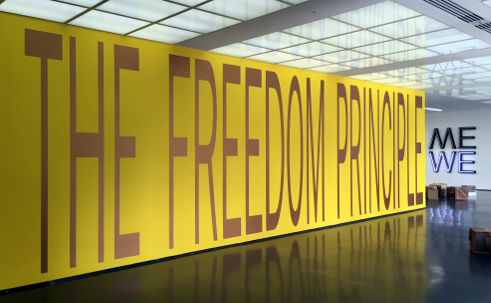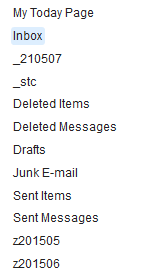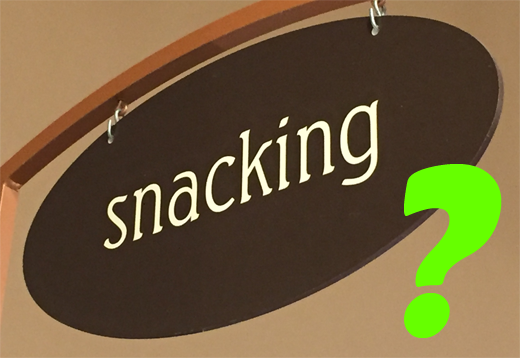My Takeaways From The Book Evolutionary Eating By Dr. Theresa Nesbitt
Over the summer I was seriously considering weight and diet counseling. As, well, let's just say I need to lose a few pounds, and with the increasing demand of little kids – plus the fact I am not getting any younger – it was more than time to take action.
When I talked with a colleague who is also a doctor about this, he asked me if, before I committed time and money to a program, I could commit US $15 on a book. As you cant even get a mediocre mixed drink in some Chicago bars for that, I said, “why not?” It was then that he recommended I read a book written by a friend of his, Dr. Theresa Nesbitt, titled Evolutionary Eating: How We Got Fat and 7 Simple Fixes.
As the book was recommended by someone I trust, I bought it. But I have to admit – by the title alone, which I thought was cliché for a health book, I probably wouldn't have otherwise bought it. But I did, and I am glad I did. And it has worked for me too, but I will save that for the end of this post.
So it is probably needless to say that I had several take-aways from this book, and here's some of the top ones I'd like to share:
We Never Really Learned Everything About Eating – Looking back on growing up, plus raising my own little angels, most of what we teach our kids about eating is more logistical – use utensils, don't put food in your hair, chew with your mouth closed – but we don't have as much focus on when to eat, what to eat and why.
Eat 3 Meals A Day At Routine Times – By eating consistently, or as consistently as possible, your body “knows” when to process food coming in and when to process stored fat, and by doing so you will use that excess stored energy and lose weight. I had an uncle who did this, eating 3 meals a day of the food he grew and raised and he lived to his mid 90's.
Keep It Real By Eating Real Food – Stick to basic and real foods and less or no processed or manufactured foods, or as Dr. Nesbitt calls “food forgeries” as our bodies are built for processing natural foods and not artificial or manufactured ingredients, flavors and additives. The original TV chef, Julia Child, always cooked with real butter, lard and wine and she lived to her 90's as well.
No Snacking – If you eat 3 meals a day only, you are thereby not snacking. Of course this goes beyond everything out there in society, at least modern American society. This for me has been personally tough, especially with earlier said angels who are ever growing and snacking. But by me snacking I too am ever growing, but in a bad way, and by not snacking, that has subsided.
How Vegetable Oil Is Made – Vegetable oil is supposed to be better than other oils, but they don't necessarily squeeze veggies to get the oil, unlike with olive oil. A chemical process is used to get it, and where the book introduces this I have done my own research as well. I'll stick with olive oil, or as I have been doing, I will forego oil altogether and use a variety of natural foods to add flavor.
Any Change Requires Willpower – This is probably the only thing I disagree with the author on. She states that by learning how to eat better, no willpower is involved. For someone like myself who has been eating the same way for almost half a century, willpower isn't only involved, it is direly needed! In the past I have lost weight, but always ate the same, and then it was more involved with a high level of exercise. When I stopped exercising, the weight came right back.
Some of these are of the 7 “simple fixes” that Dr. Nesbitt offers, and if you are intrigued as to what they all are, I recommend getting a copy of this book. As for the book as a whole, it is a very good and easy read – not intense, educational and supportive with a touch of humor, all the while not being too preachy. I recommend Evolutionary Eating not only for someone looking to lose weight, but for anyone looking to eat better or to support someone losing weight.
As for myself, I read the book over summer and it really resonated with me. I have changed my diet quite a bit, eating more salads without dressing, and cutting out most all breads. I still eat pizza and pasta, but I try to eat less of it. It has been far from perfect, and sometimes a struggle, but when I am hungry a coffee or seltzer will do the trick. Since simmer, I have lost about 25 pounds. I have a lot more to lose, but I am pleased with the results so far!
I have shared this book with my immediate family, and have given my copy to a friend. If you read Evolutionary Eating, I welcome your thoughts on it in the comments of this post.
This is from The Hot Iron, a journal on business and technology by Mike Maddaloni.
Did you enjoy this? Subscribe to The Hot Iron by RSS/XML feed or Read by Email
Book Take-Aways • Strategize • Thrive • (0) Comments • PermalinkIf You Love Your Children Get A Domain Name For Their Name

They are little bundles of joy. They are the future. They will probably decide what nursing home we will go into someday. And the odds are good they could become a household name or brand. If not, who is to say what they will need a couple of decades or less after they are born and (hopefully) on their own?
There are a few investments you can make now when the kids are young that will pay off in the future. One is whole life insurance, another is a college savings fund. And another? Registering a domain name or names for their birth name.
I Did and So Should You
Shortly after each of my wonderful little ones were born, and shortly before I contacted relatives and emailed the world, I registered domain names for their birth names. Right in the delivery room.
The decision to get domain names for your kids is smart. It is a low cost (about US$10/year and up, depending on the domain extension) investment in their future. Plus you will never have regrets down the line as nobody else will be able to register their names in the event they suddenly get famous, or decide to focus on their personal brand. The way things are going these days, that may be sooner than later.
I Can Do It and So Can You
Speaking of domain name extensions (a.k.a. what’s after the dot), I recommend starting with the “big 3” of .com, .net and .org, and in that order. If any of those are not available, you may want to try another extension, such as .uno, .co or another short one. You may want to keep away from ones which may not be relevant to them down the road, such as .marketing.
If you’re looking for a great place to register and hold a domain name, go to name.com. I did not make any money by recommending them, but I have had domain names with them for years, and they are the best in my mind – from support to their easy to use, stylish Web site. Plus they offer two-factor authentication, so your domain names are safe.
Have you registered a domain name for your kid? If so, I’d like to hear from you. Or are you against the idea? I’d like to hear from you especially! Please share your thoughts in the comments to this post.
This is from The Hot Iron, a journal on business and technology by Mike Maddaloni.
Did you enjoy this? Subscribe to The Hot Iron by RSS/XML feed or Read by Email.
Domain Names • Strategize • Technology • Thrive • (3) Comments • Permalink
Retreat Reflect Return

You have certainly heard the expression, “if you can't stand the heat, get out of the kitchen.” Where the idea behind it is that when things are going (or cooking) it can get intense. However I don't think the phrase was to infer you have to spend every waking moment in the thick of it. At least I don't think that.
Early in my career this was something I learned – you need to sometimes get a break from it all – even for a little bit – to be able to keep sharp and focused on the task at hand. Not to forget if you are stuck on something, staring at it all day in itself will not solve it.
Early Lesson Learned
Years ago I was told a story by a manager at the time that really hit home with me, and changed my work habits to include stepping away from it all.
In the story, he was in a distribution center, standing among the racks of palleted merchandise with senior executives of the client. There was a problem and everyone was talking but nobody was really contributing to the situation. In the middle of this, he hopped on a hydraulic scissor lift and went up about 3 levels of the racks. Several minutes later, he lowered the lift and descended, and had the solution to the problem.
Where all of the clients thought he went up on the lift to physically solve the problem, he actually did so to get away! He couldn't think among the bloviating of everybody so he went up the lift, and away from them, to clear his head and logically solve the problem, which he was able to do once free of the clutter. The client was impressed, and in the end had no idea they could have been an impediment to solving the issue at hand.
In short, what he did was retreat, reflect and return.
This is something I have done and continue to do. I touched on this when I wrote how I came up with the name of my Web site assessment checklist. Among some of the ways I have and still do retreat, reflect and return to the workplace include:
Penguins – When I worked in downtown Boston I would go to the New England Aquarium and lean over the railing of the penguin pool at the base of the giant tank. I would stand there and watch the penguins for a while. They have such a simple life, and watching their interactions with each other made for a great way to clear my head.
Plymouth Rock – When I worked in the town where the Pilgrims from England landed in the New World in 1620, I would occasionally go to a sub shop in the center of Plymouth, Massachusetts, across the street from the infamous rock on which the Pilgrims reportedly were first to step on when descending from their ship. I would take my lunch from said sub shop and eat it while leaning over the railing of the shelter which covers the Rock. Staring at the Rock and Plymouth Bay behind it was a great stress reliever.
Modern art – My latest venue is the Museum of Contemporary Art in Chicago, located across the street from my newly-joined workplace. Though said workplace is a great environment to work in and in no way stressful than, say, my last job, it is still nice to recharge my brain a bit on Tuesdays when the museum is free to Illinois residents. I do plan on getting a membership there as I may find the need to think a little differently on another day of the week other than Tuesday.
I am eager to hear if you have any techniques – or destinations – of your own, when you retreat, reflect and return. Please share then in the comments of this post.
This is from The Hot Iron, a journal on business and technology by Mike Maddaloni.
Did you enjoy this? Subscribe to The Hot Iron by RSS/XML feed or Read by Email
Business • Strategize • Technology • Thrive • (0) Comments • PermalinkMy Takeaways From The Book Scrum by Jeff Sutherland
Imagine a workplace where not only you can work without impediments to your progress, but one where you have a say in what and how you do it? And to top of it you’re much more productive and successful and so is your ultimate business customer.
So what’s the catch? You simply have to drop the current way you work and adopt something called Scrum.
What is Scrum? The origins of the word come from the sport rugby, where a tight formation of players move and work together to get the ball forward. The term Scrum here has its origins on software development, where a small team of people work closely together to build software. The difference is in how they build it – using an iterative cycle of a few usable features at a time rather than defining everything upfront, then months (or years) later receiving software with all of the features.
The later process I described above is commonly referred to as “waterfall.” As one giant cycle produces all software (or the falling water) and the remaining project time is used to fix bugs and make changes in the business process (or the water flowing from the waterfall). It is far from a perfect system, especially as it doesn’t take into consideration business changes, let alone end users not always knowing what they want, both upfront or a year from now!
The former process I described above is Scrum, and was created in the 1990’s by Jeff Sutherland and Ken Schwaber. This book, Scrum: The Art of Doing Twice the Work in Half the Time, is written by Sutherland, and presented in a format to introduce Scrum to the wider world outside of software.
As someone who has built software all of my professional career and then some and has used scrum formally in some of my past roles, I was interested to read this book, not only because it is written by one of the co-founders of Scrum, but to learn more how it can be used in other aspects of business and life.
Among my many thoughts from reading Scrum, I have the following takeaways:
- Building software – or anything really – is a journey – It’s hard to be perfect and know upfront everything you will possibly need in software you will use. Rather, admit it is a journey, build it over time, and get it closer to your needs while getting functioning features along the way.
- You have to be committed to Scrum to reap its true potential – Dipping your toes in the Scrum swimming pool will not give you the benefits of it. You have to fully commit to it. If you are hesitant to commit, read the book.
- If you don’t do it someone else will – Scrum as a framework is always gaining in popularity, and the number of people becoming certified in Scrum as well. If you or your organization is resistant to it, realize more organizations are always adopting it.
- I want to be Scrum Certified more now than before – after reading the book and hearing Sutherland’s stories of Scrum’s successes in business and beyond, I really want to take formal Scrum training and become certified more than I did before reading the book.
Scrum: The Art of Doing Twice the Work in Half the Time is a great read, for those who work in business or any organization. I wish I had this book years ago when I was starting my Web consulting business – not just for building the Web software but for the overall running of my business. It is packed with stories of its successful use in various industries. Though it is very supportive of Scrum, it is not a “fluffy” and rah-rah story – it gets straight to the point and reinforces all that is stated. The book concludes with a step-by-step plan for deploying Scrum.
This is the part of my book takeaways where I disclose why I read a book. As I said, when I heard of it, I needed to get it and bought it myself, and for 2 reasons. The first and most important is that I wanted to read the story. The second and anecdotal reason is that I once worked at the same company as Jeff Sutherland, and we once had a brief work-related phone call. As I read Scrum, I could hear his no-nonsense style, which added to the reading.
As I conclude this post, I have not decided whom to give the book to, as it is something I do after I read one. If you are interested let me know. If you have read the book, or based on this are interested to, I welcome your thoughts in the comments to this post.
This is from The Hot Iron, a journal on business and technology by Mike Maddaloni.
Did you enjoy this? Subscribe to The Hot Iron by RSS/XML feed or Read by Email
Book Take-Aways • Build • Business • Agile / Scrum • Strategize • Technology • Thrive • (2) Comments • PermalinkNew Approach To Managing My Email Inbox To Zero
 Over 6 years ago I wrote about a process I had then been following for almost a decade – managing my email inbox to zero. The idea was straightforward – your email inbox is not a to-do list or anything else. You take mail from it, and do something with it, just like the postal mailbox at your home. Doing this is something I continue to do – dare I say obsess over – now for over 15 years.
Over 6 years ago I wrote about a process I had then been following for almost a decade – managing my email inbox to zero. The idea was straightforward – your email inbox is not a to-do list or anything else. You take mail from it, and do something with it, just like the postal mailbox at your home. Doing this is something I continue to do – dare I say obsess over – now for over 15 years.
Like any process, a better way to do something comes along, including how I was managing my email. Where the basics of keeping the inbox to zero still applied, the one part that wasn’t working for me was the filing of emails. It became clear that while email is not a good task list, it is also not a good archive, especially how I was managing it. So I came up a new process I’d like to share with what I did with the emails I wanted to file.
A Better Way To File
While archives of email folders are searchable, have date/time stamps and so forth, pouring through email messages and threads was becoming more and more inefficient for me. To start, I had my email stored offline in an email client software, Mozilla Thunderbird, on my PC. If I needed something while away from it, I couldn’t. Even with all of the emails I had in the archive within Thunderbird, I rarely would have to go back far in time for something. Needless to say, I was continuing to save email message after email message, and it was cluttering my hard drive more and more.
The change to my filing was in 2 steps – the first was to eliminate Thunderbird from the picture and only use Web-based mail. The second was to create folders for email messages I was saving for a particular month, and only keep the current month and 2 past months in Web mail. Once a new month rolled over, I would create a new folder for it, then go through the oldest folder and either delete or save to my PC archive the individual email message as a PDF file. The accompanying photo to this post shows how my mail folders look – the “_201507” is the current folder, and those prefixed with “X” (namely so they will appear at the bottom of the list) are for the last 2 months prior.
I started this process back in March, and now we are at July. I have since cleared out 2 months of old emails, and probably only saving half of them. I have at ready-access email messages I need through Web mail and on my mobile device, and I have a more robust archive of my “stuff” on my personal hard drive.
In short – so far, so good.
Now I will get back to the 17 messages in my inbox. In the meantime, I’d welcome your thoughts on my revised approach, and feel free to leave them in the comments of this post.
This is from The Hot Iron, a journal on business and technology by Mike Maddaloni.
Did you enjoy this? Subscribe to The Hot Iron by RSS/XML feed or Read by Email.
Strategize • Technology • Thrive • (0) Comments • Permalink




